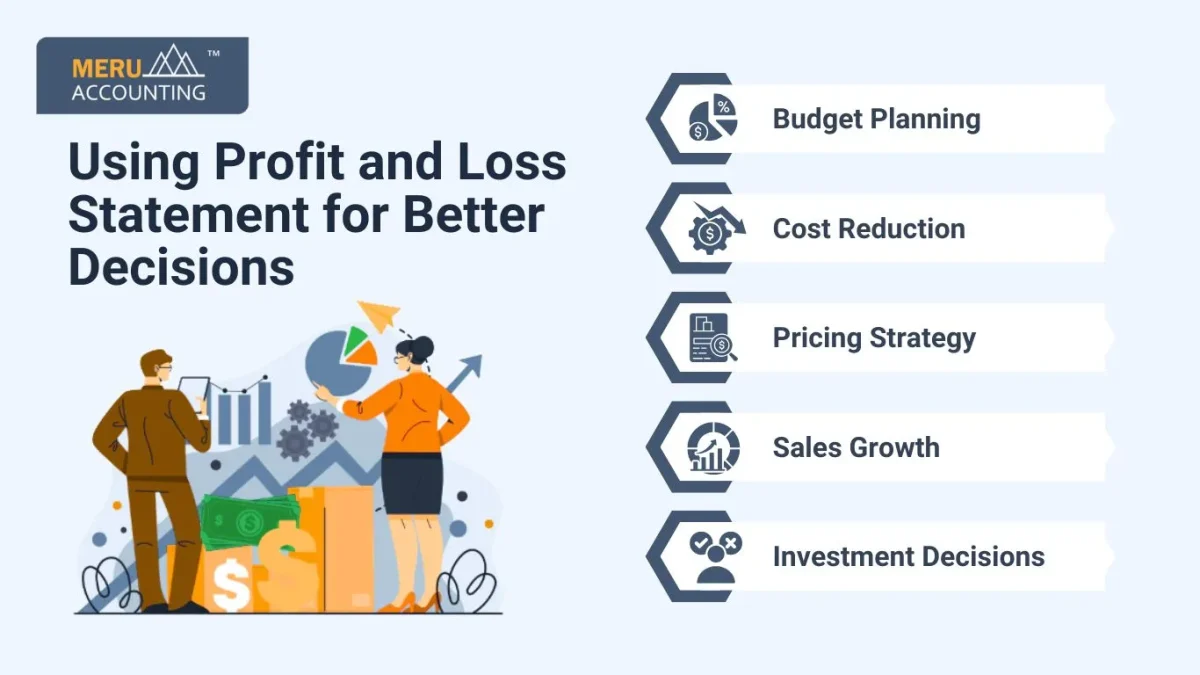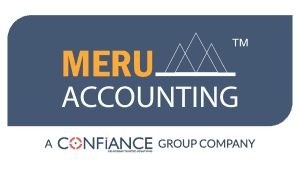Profit and Loss Statement Analysis for Better Business Decisions
A Profit and Loss Statement is one of the most used reports in accounting. It shows the income earned and the costs spent in the business. It also gives a true view of profit or loss. This helps owners and investors see how the firm is doing.
Every business must prepare the statement on a set schedule. It guides leaders with clear numbers instead of rough guesses. Without this, owners risk wrong steps that cause big losses. With it, plans can be based on real data trends.
What is a Profit and Loss Statement?
A Profit and Loss Statement is a report that shows a business’s income, costs, and profit for a set time. It is also called the income sheet. This report shows whether the business is making money or losing money. It helps track how the business is doing each month or year. Listing all sales and expenses gives a clear view of financial health. It also shows which parts make money and which cost too much.
Business owners, banks, and investors use this report to check the health of the business. It is made each month, quarter, or year. Regular reports give clear facts and help in planning for growth and smart choices. A good Profit and Loss Statement can guide moves like hiring staff, buying tools, or growing the business. It can also show trends, like rising costs or low sales, so owners can act fast.
This report is part of the key business records with the balance sheet and cash flow report. Together, these reports help keep business books neat and ready for tax or loan checks. Even small firms get help from it, as it keeps cash matters clear and avoids surprises. With the right records, banks and investors trust the business more, and owners can plan budgets, cut waste, and grow profits.
Why the Profit and Loss Statement Is Important
Clear Picture
- It shows income, cost, and final profit in detail.
- Helps in knowing if business goals are met or not.
Financial Planning
- Used to build budgets and create expense control steps.
- Guides owners in making safe and wise future plans.
Legal Use
- Needed for tax filing and audit checks at all times.
- Works as proof of income for loans and investors.
Growth Check
- Tracks how sales cover costs in different periods.
- Shows if growth is steady, weak, or very strong.
Key Parts of a Profit and Loss Statement
Revenue
- Income earned from selling goods or services to customers, as shown in the Profit and Loss Statement.
- Growth here shows strong demand and rising market reach, which is highlighted in the Profit and Loss Statement.
Cost of Goods Sold (COGS)
- Direct cost of making or buying products for sale, recorded in the Profit and Loss Statement.
- Covers labor, raw material, and all supply costs.
Gross Profit
- Sales minus COGS gives the gross profit value, which appears on the Profit and Loss Statement.
- Shows how well the firm manages direct costs.
Operating Expenses
- Daily running costs such as rent, wages, and ads, all detailed in the Profit and Loss Statement.
- Needs checks to avoid waste and extra spending.
Operating Profit
- Gross profit minus operating costs gives the business’s core profit, as reported in the Profit and Loss Statement.
- Reflects the strength of work without outside factors.
Other Income and Expenses
- Covers side income like rent or interest earned.
- Also includes loan interest or other extra costs.
Net Profit or Net Loss
- Final result after every income and every cost.
- The main outcome is shown in the Profit and Loss Statement.
How to Analyze a Profit and Loss Statement
Check Revenue Trends
- Compare sales with past months or years for growth.
- Spot if sales rise, fall, or remain the same.
Study Gross Profit Margin
- Ratio shows how much remains after direct costs, as seen in the Profit and Loss Statement.
- A high margin means good pricing and cost control.
Review Operating Expenses
- Track if expenses rise faster than sales using insights from the Profit and Loss Statement.
- Reduce waste to balance costs with total income.
Look at Net Profit Margin
- Ratio of net profit to sales income in percent.
- Shows if the firm truly earns money after all.
Compare with Budgets
- Match actual numbers with budgets using figures from the Profit and Loss Statement.
- Spot gaps and fix issues for better results.
Compare with Industry Benchmarks
- See how the results in your Profit and Loss Statement compare with industry standards.
- Helps set real goals and track steady progress.
Benefits of Profit and Loss Statement Analysis
Smarter Decisions
- Gives clear facts to back up daily business choices.
- Reduces guesswork and helps avoid costly mistakes.
Cost Control
- Helps in finding where costs can be reduced.
- Ensures money is used well in every area.
Cash Flow Insight
- Shows if income is enough to meet expenses, as revealed in the Profit and Loss Statement.
- Guides in planning loans and working capital needs.
Sales Strategy Check
- Tracks if sales efforts give expected good results.
- Helps improve pricing, discounts, or ad campaigns.
Investor Confidence
- Banks and investors trust clear and true reports.
- Builds an image of a strong and honest business.
Using Profit and Loss Statement for Better Decisions
Budget Planning
- Past numbers help create budgets for future spending.
- Avoids risks of overspending or under-funding work.
Cost Reduction
- Finds high expenses not needed for core growth.
- Let’s owners cut waste and raise net profit.
Pricing Strategy
- Links cost with sales to set fair product prices.
- Make sure each sale covers cost and adds margin.

Sales Growth
- Shows which items bring higher sales and profit.
- Directs focus on top-selling goods and services.
Investment Decisions
- Profits help decide where to invest in projects.
- Ensures growth is backed by real financial support.
Common Mistakes in Profit and Loss Statement Analysis
Late Updates
- Reports made late give weak data for decisions.
- Always prepare and review at a fixed set time.
Ignoring Small Costs
- Small costs build up and lower the total profit.
- Always track each expense for true and fair reports.
Not Checking Past Trends
- One-time numbers may not show true patterns.
- Compare past results to spot real growth paths.
Focusing Only on Sales
- Sales growth can hide costs that rise faster.
- Always check net profit for the full picture.
Missing Benchmarks
- Ignoring industry standards gives false business comfort.
- Compare with peers to get an honest and fair review.
Steps to Improve Profit and Loss Statement
Keep Records Clean
- Record all income and costs in real time.
- Avoid delays that lead to missed or false numbers.
Track All Income
- Count both cash and credit sales in the books.
- Shows the true income earned by the business.
Record Small Expenses
- Note each small payment, like petty cash or supplies.
- Many small costs combined can affect the bottom line.
Monthly Review
- Review reports each month instead of waiting yearly.
- Spot issues early and adjust plans on time.
Use Tools
- Accounting tools make reports fast and error-free.
- They save time and show trends in simple ways.
Role of Technology in P&L Analysis
Software Support
- Tools like QuickBooks and Zoho prepare the Profit and Loss Statement quickly and accurately.
- They reduce errors and give clean report formats.
Graphs and Charts
- Software turns the Profit and Loss Statement into easy graphs and charts for better insights.
- Helps owners see trends at a single glance.
Cloud Access
- Cloud systems give access anywhere and anytime.
- Team members can work on data at once.
Time Saving
- Cuts down manual work and saves working hours.
- Let’s staff focus on growth, not just entries.
How Often Should You Review a Profit and Loss Statement?
Monthly Review
- The best way to spot quick changes in trend is.
- Let’s owners act fast to avoid a big loss.
Quarterly Review
- Shows medium-term results and larger business trends.
- Helps in planning strategies for steady growth.
Yearly Review
- Needed for tax filing and yearly audits.
- Gives the full view of performance over twelve months.
Regular Checks
- Regular reviews reduce the risk of hidden problems.
- Keeps business alert, ready, and always on track.
The Profit and Loss Statement is more than just a form. It is a powerful tool for smart financial planning. By reading and studying it, owners see true results. It helps guide choices that keep growth steady and safe.
At Meru Accounting, we help firms with clear reports. We prepare accurate Profit and Loss Statements for all clients. Our experts give advice on budgets, costs, and growth. We help firms make strong choices backed by true data. With Meru, your business gains clarity, control, and confidence.
FAQs
Q1. What is a Profit and Loss Statement?
It shows all income, all costs, and final results.
Q2. Why is the Profit and Loss Statement important?
It helps check profit, plan budgets, and track growth.
Q3. How often should I prepare it?
Make it monthly, quarterly, and yearly for best clarity.
Q4. Can small firms use a Profit and Loss Statement?
Yes, small firms must use it to track money.
Q5. What does net profit mean?
It is money left after all costs are paid.
Q6. What tools help in P&L analysis?
QuickBooks, Xero, and Zoho Books help make reports.
Q7. How does P&L help in tax filing?
It gives income proof that is needed for taxes.








